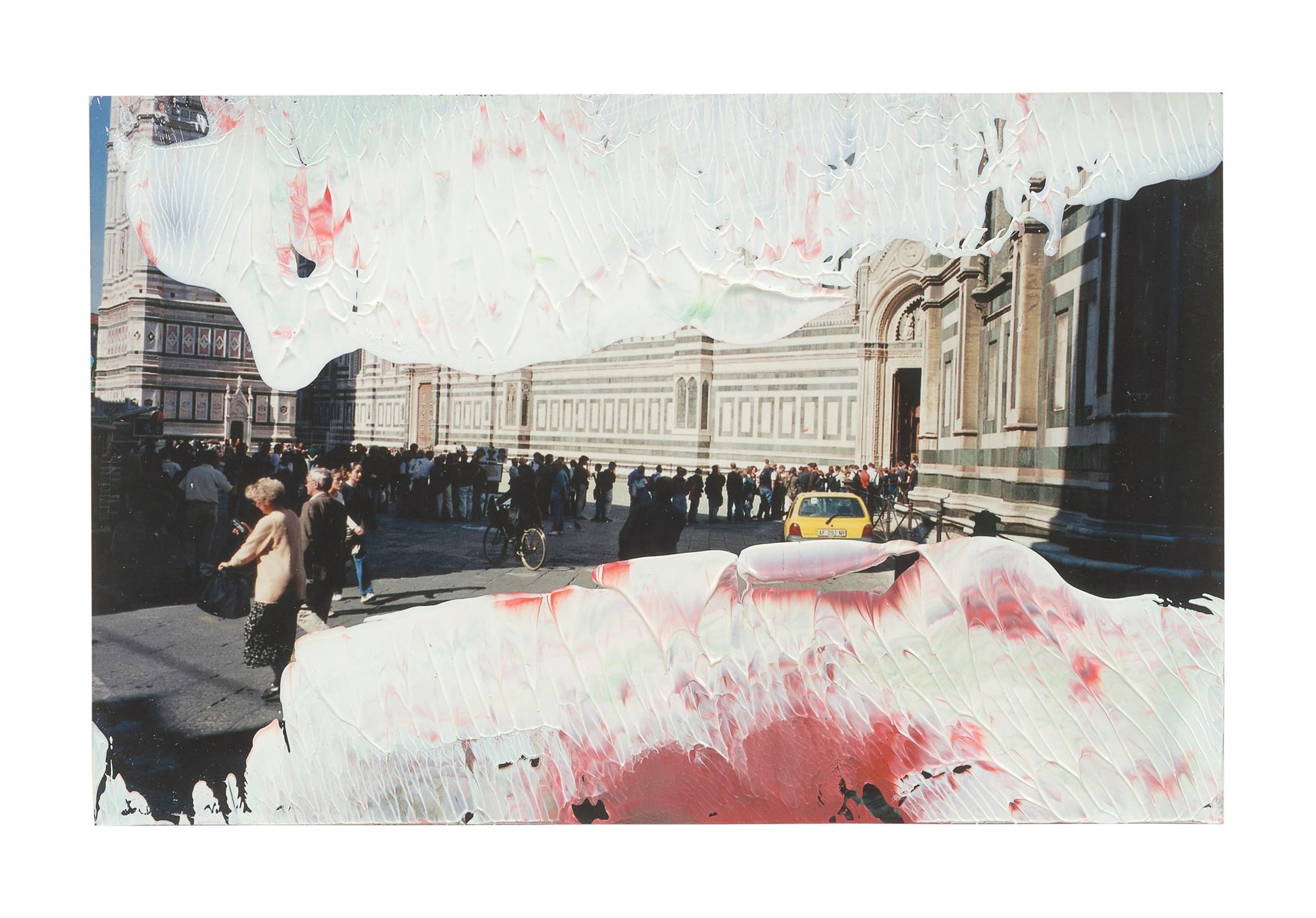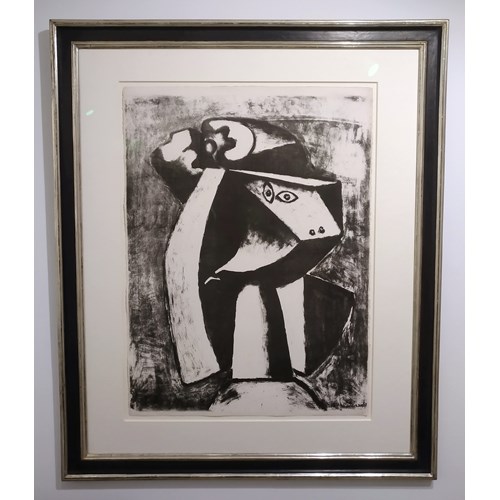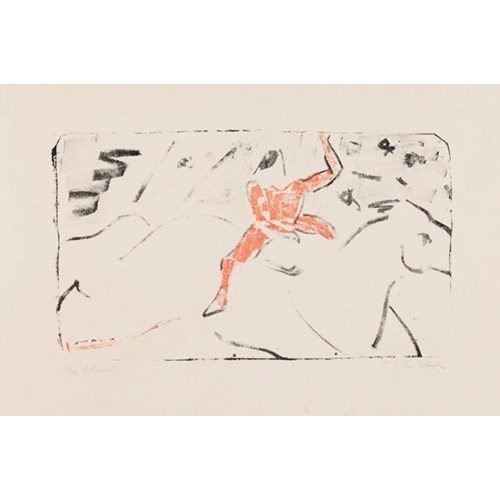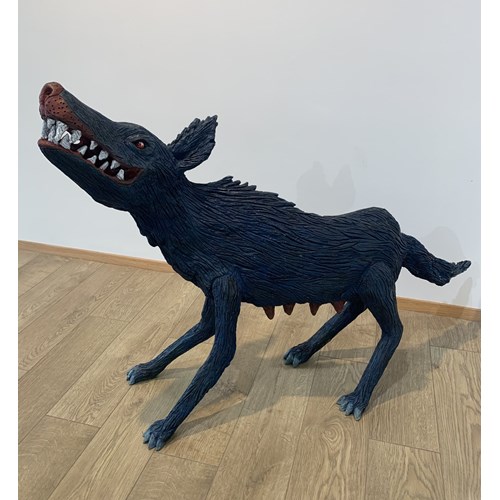Marketplace
Untitled (12. August 2000)
Gerhard Richter
Untitled (12. August 2000)
Date 12 August 2000
Epoque 20th century
Dimension 9.7 x 15.2 cm (3⁷/₈ x 6 inches)
Dimension avec cadre cm (11³/₄ x 15³/₄ x 1¹/₈ inches)
In his multifaceted oeuvre, Gerhard Richter has repeatedly used photographs as the basis for his works. His blurred paintings based on photographs have been studied many times by art researchers. In contrast to this, however, Richter also painted directly over standard photographic prints with oil paint. Inspired by the random splashes and traces of color on the originals for his paintings, he created pictorial overpaintings. Such overpaintings could already be found in Richter's atlas. Almost all of these generally small-format paintings are privately owned and are rarely shown publicly. Even in these subjects, which are covered by a painterly veil, Richter proves himself to be a 'master of keeping his distance', as Robert Storr once put it. This monograph offers a unique opportunity to pay tribute to an extensive body of work in the artist's oeuvre that has received little attention to date.
Richter has been creating overpainted photographs since the late 1980s. Despite their small format, they have a significant status within Richter's oeuvre: like no other group of works, they embody the interface between the representation of photographic image content and abstract painting. This is not just a technique - such as watercolor on paper - “but rather a special methodical procedure for obtaining unfamiliar images on the basis of the familiar.” (Uwe M. Schneede) Through photography, a representational motif is depicted, while at the same time an abstract color material is applied to the surface. These two levels of reality appear as an interlocking unity; they enter into a close, exciting and at the same time subtle connection.
“I made small photos,” Gerhard Richter said in an interview in 1991, “which I smeared with paint. Something of this problematic came together”. By “this problematic”, Richter is referring to the relationship between the reality of the photograph and the reality of the paint. “Photography has almost no reality, is almost just an image,” Richter remarks, “and painting always has reality, you can touch the paint, it has presence.”
Richter's overpainted photographs are based on his personal photo archive. Among the images used are pictures of Richter's family, of nature or city views or even vacation photos from Sils Maria and Juist; some are intimate testimonies of his private life, others are blurred snapshots or banal landscape shots. The overpaintings are created in close connection with his work on abstract paintings, for which Richter uses a squeegee. According to Richter, the paint masses remaining on the squeegee always show “beautiful spots”. Accordingly, he applies the paint to photographs by dabbing, scraping, dabbing or spackling, whereby the artist conceals certain parts of the underlying motif and thus directs the viewer's gaze. The result is a dynamic of revealing and concealing, while color and photography represent competing dimensions.
Richter's painterly effects on the limited space of a mostly 10 x 15 cm photograph prove to be astonishingly diverse. They range from a few sparse splashes of glossy paint to full-surface overpainting, reminiscent of the artist's large abstract canvases. Here, the color seems to interact with the underlying motif according to the principle of controlled chance. The color values of the photo regularly correspond with the chromaticity of the paint application. This appears three-dimensional and tangible; together with the high-gloss photo surface, it creates a strangely tactile attraction. While the familiarity of the snapshots only suggests intimacy, physical proximity is necessary in order to appreciate the diverse effects in these concentrated works.
Date: 12 August 2000
Epoque: 20th century
Signature: Signed and dated “August 12, 2000” on the backing cardboard. Signed and dated again on the backing cardboard.
Dimension: 9.7 x 15.2 cm (3⁷/₈ x 6 inches)
Provenance: Marian Goodman Gallery, New York; Private collection, Switzerland (-2023).
Plus d'œuvres d'art de la Galerie









